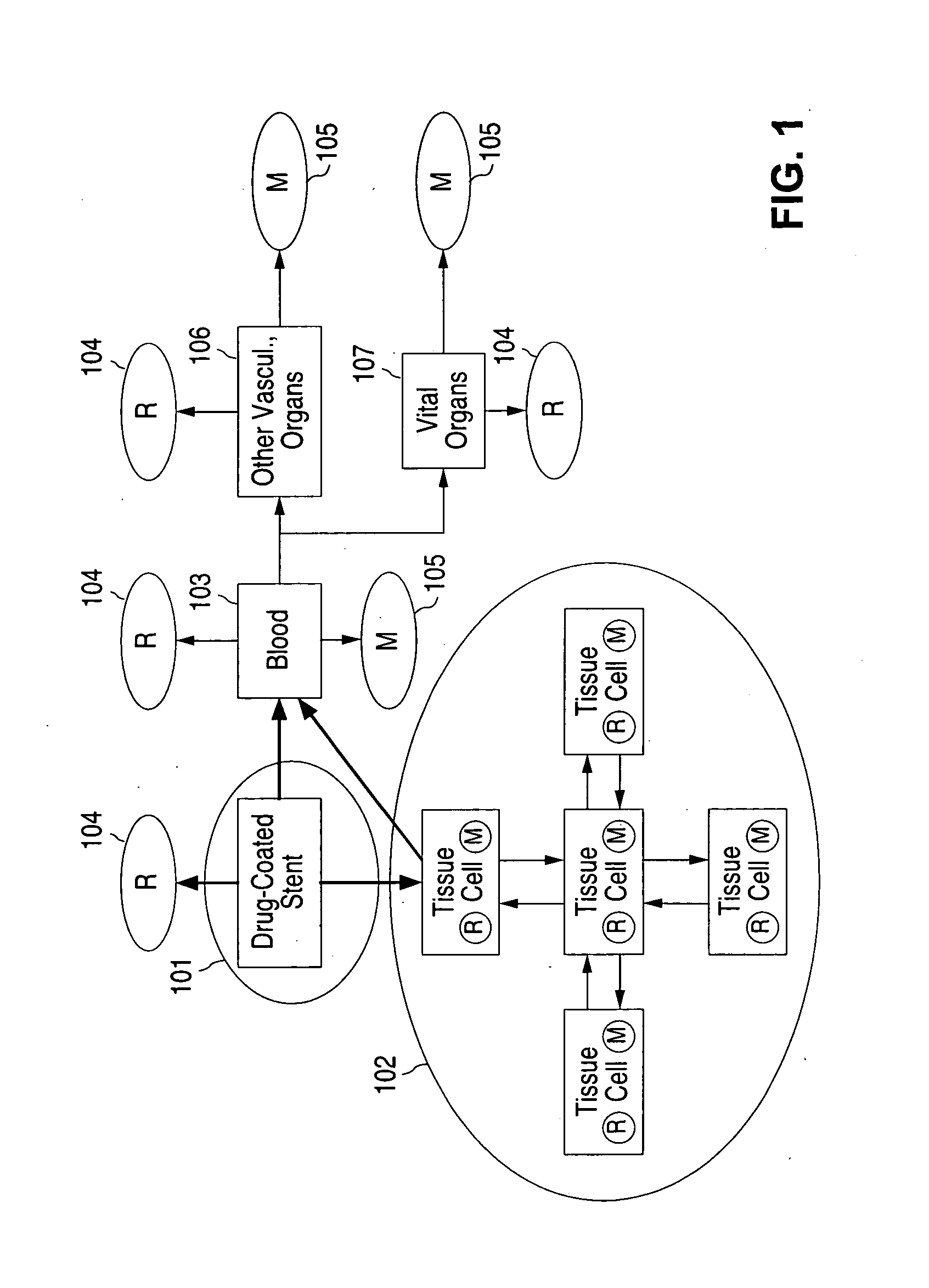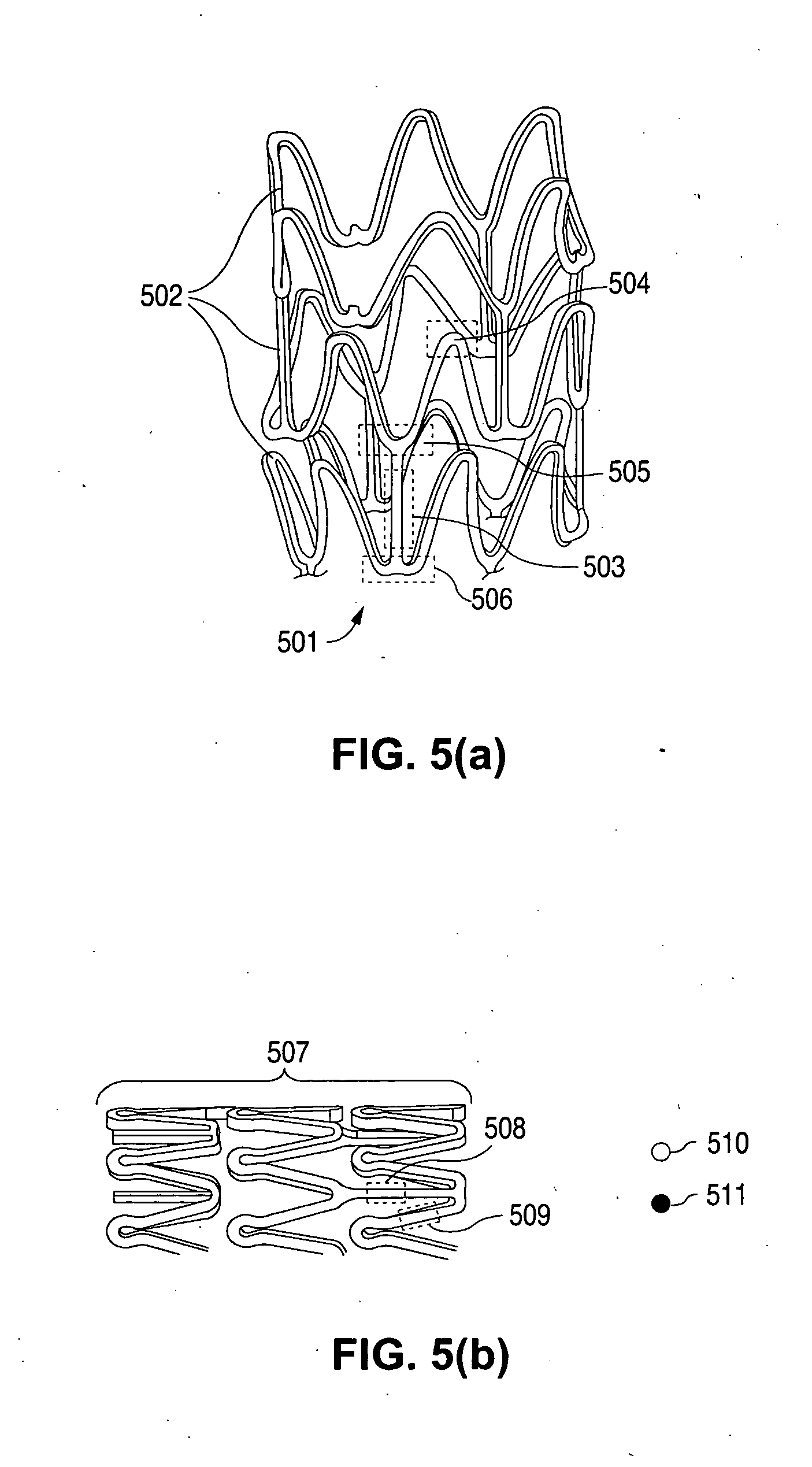Design of poly(ester amides) for the control of agent-release from polymeric compositions
a polymer composition and agent-release technology, applied in the field of polymer matrices, can solve the problems of agents being released, creating adverse effects within the subject, and art has not yet developed a reliable control method
- Summary
- Abstract
- Description
- Claims
- Application Information
AI Technical Summary
Problems solved by technology
Method used
Image
Examples
example 1
[0343] The PEA of formula (XVII) can be prepared according to the following procedure:
Method of Preparing of L-Leucine-ε-L-Lysine Benzyl Ester-2TosOH
[0344] L-leucine-ε-L-lysine HCl (New England Peptide, Inc.) (73.86 gm, 0.25 mole), p-toluenesulfonic acid (152.15 gm, 0.80 mole), benzyl alcohol (100.9 ml, 0.97 mole), and 200 ml of benzene is added to a 1 liter reaction flask equipped with a mechanical stirrer, Dean Stark trap, thermometer and argon inlet. The mixture is heated to 80° C. for 8 hours, and condensate is collected in the Dean Stark trap. The mixture is transferred to a 2 liter flask, and 1 liter of ethyl acetate is added to the mixture with stirring. The mixture is stored overnight at 4° C., and L-Leucine-E-L-Lysine Benzyl Ester-2TosOH and is isolated by filtration.
Method of Preparing co-poly-{[N,N′-sebacoyl-bis-(L-leucine)-1,6-hexylene diester]-[N,N′-sebacoyl-L-leucine-L-lysine mPEG amide]}
[0345] Dry triethylamine (61.6 ml, 0.44 mole) is added to a mixture of di-p-tol...
example 2
[0350] The copolymer represented by formula (XII) can be prepared in a manner analogous to the method used to prepare the copolymer represented by formula (XVII) by replacing the L-leucine-ε-L-lysine HCl with L-lysine HCl. While not intending to be bound by any theory or mechanism of action, a proposed reaction mechanism for the preparation of the PEA of formula (XII) according to one embodiment of the present invention is illustrated in FIG. 11b.
example 3
[0351] The PEA of formula (XV) can be prepared according to the following procedure:
Method of Preparing co-poly-{[N,N′-sebacoyl-bis-(L-leucine)-1,4-butylene diester]-[N,N′-sebacoyl-L-lysine-4-carboxy-TEMPO anhydride]}
[0352] Dry triethylamine (61.6 ml, 0.44 mole) is added to a mixture of a di-p-toluenesulfonic acid salt of bis-(L-leucine)-1,4-butylene diester (118.82 gm, 0.18 mole), a di-p-toluenesulfonic acid salt of L-lysine benzyl ester (11.603 gm, 0.02 mole), and di-p-nitrophenyl sebacinate (88.88 gm, 0.2 mole) in dry DMAC (110 ml). The mixture is stirred and heated at 80° C. for 12 hours, cooled to room temperature, diluted with ethanol (300 ml), and poured into water (1 liter).
[0353] The polymer is separated, washed with water, and dried under vacuum. A free carboxyl group can be generated by hydrogenolysis over a palladium catalyst. Ethanol (1200 ml) is combined with the polymer (100 gm) and a palladium on carbon catalyst in a 2 liter flask (Aldrich). Hydrogen is bubbled and...
PUM
| Property | Measurement | Unit |
|---|---|---|
| Mass | aaaaa | aaaaa |
| Mass | aaaaa | aaaaa |
| Mass | aaaaa | aaaaa |
Abstract
Description
Claims
Application Information
 Login to View More
Login to View More - R&D
- Intellectual Property
- Life Sciences
- Materials
- Tech Scout
- Unparalleled Data Quality
- Higher Quality Content
- 60% Fewer Hallucinations
Browse by: Latest US Patents, China's latest patents, Technical Efficacy Thesaurus, Application Domain, Technology Topic, Popular Technical Reports.
© 2025 PatSnap. All rights reserved.Legal|Privacy policy|Modern Slavery Act Transparency Statement|Sitemap|About US| Contact US: help@patsnap.com



